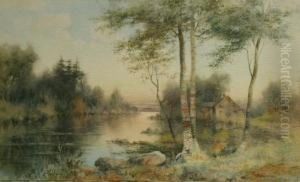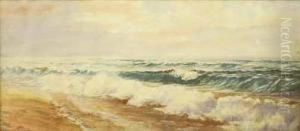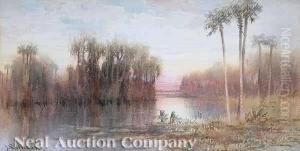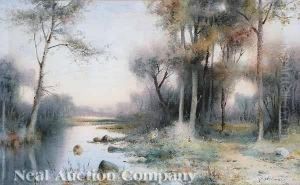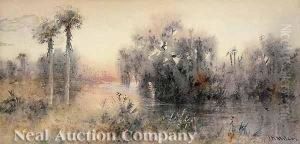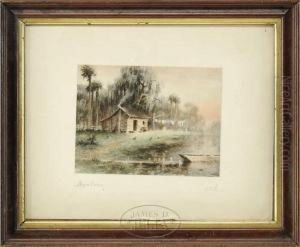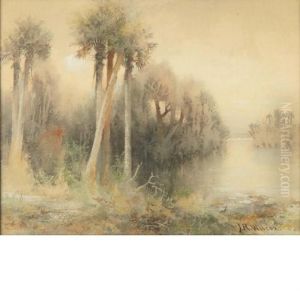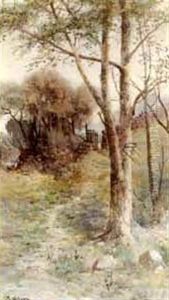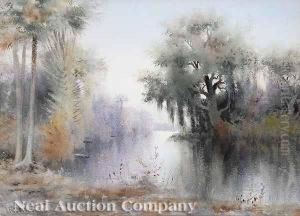James Ralph Wilcox Paintings
James Ralph Wilcox, an American painter, was born in 1882 in Minneapolis, Minnesota. Although not as widely known as some of his contemporaries, Wilcox made a modest contribution to the American art scene of the early 20th century, primarily through his landscape paintings and portraits.
Wilcox's early life and artistic training are not well-documented, but it is known that he was active during a time when American art was becoming more diverse and experimental, moving away from the strictures of European traditions and developing its own identity. The artist was part of the period that saw the rise of American Impressionism and the beginnings of Modernism, which would profoundly influence the trajectory of art in the United States.
During his career, Wilcox exhibited his work at various venues, including the Minnesota State Fair, where he won a bronze medal in 1915. His style often reflected the Impressionist influence with an emphasis on light and color, although it is not clear how much he interacted with the broader Impressionist movement or its key figures. Wilcox's landscapes often depicted the natural beauty of the American Midwest, showing rural scenes that captured the essence of the region's countryside.
Wilcox's death in 1939 marked the end of a career that, while not as celebrated as some of his peers, contributed to the tapestry of American art in the early 20th century. His works remain a testament to the regional artistic currents of the time and offer insights into the visual culture of the Midwest during a period of significant artistic transformation.
